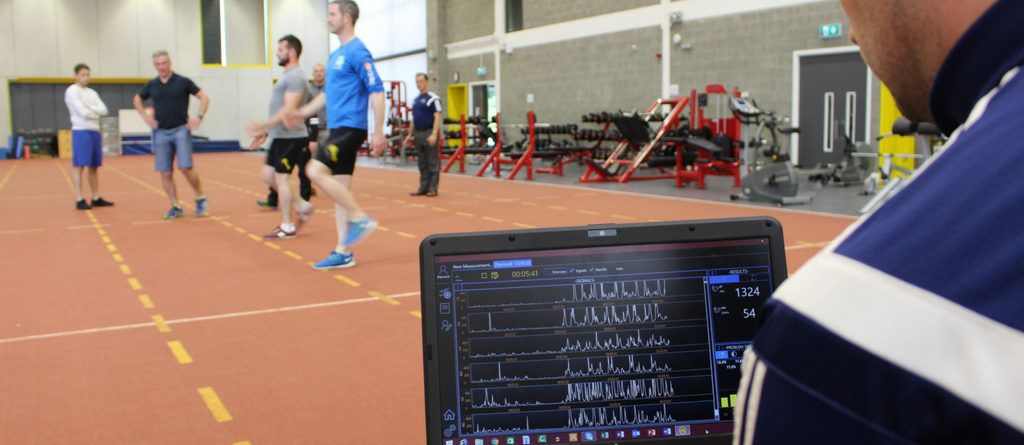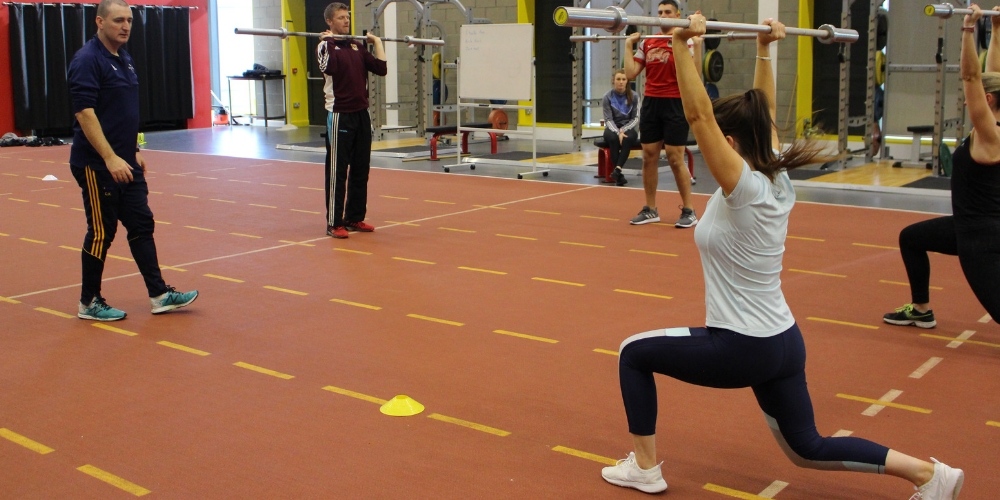EXOS Performance Specialist, Coach Eric Cochran, takes a looks at the current state of Strength & Conditioning and discusses current trends in the industry, the evolution of coaching and where the future of S&C lies.
The state of the Strength and Conditioning industry is something that has fascinated me since I began my journey as a coach nearly ten years ago.
According to the NSCA Global website, there are over 10,000 certified professionals in over 50 countries worldwide. 80% of the world’s population will experience low back pain in the course of their life. In a 2015 survey of health, although 83% of Irish citizens self-report that their health is good or very good, 32% suffer with longstanding health issues. Low back disorders ranked number one among the top three health conditions reported in the last twelve months (https://www.cso.ie/en/releasesandpublications/ep/p-ihs/irishhealthsurvey2015/).
Globally, the estimated annual cost of pain management is 185.8 billion euros. According to the World Health Organization (WHO), the worldwide prevalence of obesity nearly tripled between 1975 and 2016. In Ireland, the percent of population that reported having a BMI that exceeded the threshold for being overweight or obesity was recorded at 62% in 2017.(https://www.cso.ie/en/releasesandpublications/ep/p-wbn/thewellbeingofthenation2017/hlt/)
In 2018, the pharmaceutical industry is expected to generate nearly 715 billion euros in prescription drug revenue worldwide. Those revenues are projected to balloon upwards of 1 trillion euros by 2024 (https://www.statista.com/statistics/309387/global-total-prescription-drug-revenue-projection/).
In spite of all of the information and advances in human performance, the general population-at-large is rife with pain, generally obese, heavily medicated, and still stressed out!
At present, it would seem that collectively, we are not headed in the right direction. In this article, I would like to explore the ways in which we are working as an industry to address the problems that we are facing. What are the current trends in Strength and Conditioning? How is the role of the S&C coach evolving to help us meet the health and wellness challenges that are threatening our wellbeing? Finally, what does the future hold for the S&C coach of the future?
Current Trends in the Strength and Conditioning Industry

Setanta College Performance Science students using STATSports GPS units.
Biofeedback Technology is one of the leading trends in the industry. In 2017, Fitbit sold over 15 million units. In the period between 2010 and 2014, they grew from 60 thousand units to over 10 million! By the end of Q2 of 2016, Apple had sold 14.7 million fitness watches (https://www.statista.com/statistics/472591/fitbit-devices-sold/). These activity trackers yield performance analytics that includes everything from hydration levels to sleep patterns. Because Strength and Conditioning specialists increasingly find themselves working with the general population, integrating the data from activity trackers such as these is more important than ever.
For Strength and Conditioning Specialists that find themselves working with amateur and professional athletes, there are more opportunities for technology-driven programming. STATSports is a performance analytics company that uses special GPS technology to track in-play metabolic and mechanical load. They measure the height, distance, speed, and force of each explosive movement on the field of play. This allows the coach to manage the overall training volume of each player with greater specificity than ever before. Currently, STATSports services professional and collegiate teams across many different sports worldwide. PUSH is another company that is working to change how coaches work to improve athletic performance. It is one of a class of devices known as a bar trackers. These devices tell the coaches and athletes about the rate of force production, bar speed, and directions in various parts of a lift, over the course of the training session.
Simply put, the wearables market is booming and is showing no indication of slowing down. The Strength coaches of the future will use statistics delivered by biofeedback technology as a primary driver in their programming design. World-class coaches must be adept at cleaning, interpreting, and presenting data to their peers and athletes.
The Evolution of the Strength Coach
In the past, Strength coaches were thought of like the guys that get you bigger, faster, and stronger. While this is still an important component of Strength and Conditioning, it is not a complete picture. Coaching science has continually evolved and our field is not exempt. Athletes looking to achieve peak performance need to be supported through their physical training and psychologically. The needs of the athletes require that the coaches have a framework for facilitating behavioural change, and stress management. It is not uncommon to see elite coaches borrowing and implementing concepts from cognitive-behavioural therapy and decision sciences like behavioural economics. Dr. Nick Winkleman, Head of Athletic Performance and Science at the Irish Rugby Football Union, and former Director of Education at EXOS, is a leader with respect to this multifaceted, multidisciplinary, approach.

Nick Winkelman, the IRFU’s head of athletic performance and science. Photograph: Morgan Treacy/Inpho.
The integration of manual therapy techniques into movement programming and performance training is another ‘tool’ in the ‘toolbox’ of the strength and conditioning professionals of the future. Coaches are frequently required to bridge the gap between the post-rehabilitative space and peak performance. They are also looking to have more of a role in the recovery of their athletes. Strength and Conditioning professionals are increasingly seeing the benefits of becoming licensed in various modalities of manual therapy. These “hybrid coaches”, through merging skill sets, can often create instant change in their athletes’ performance by using neuromuscular activation techniques, joint mobilization, and soft tissue manipulation. Some examples of coaches that have been successful using this model of care in the Strength and Conditioning space are Dr. Sue Falsone, Dr. Kelly Starrett, Dr. Gray Cook, Dr. Adam Wolf, Lenny Parracino, and Dr. Andrea Spina.
A quick survey of these forward-thinking practitioners shows the possibilities of manual-movement integrative approaches in our industry. The composite identity of the S&C coach of the future will be one part cognitive-behavioural psychologist, one part data scientist, one part manual therapist, and one part movement specialist.
The Future of Strength and Conditioning
It is more and more clear that as we move forward through time, AI, technology, algorithms, and various iterations of automation are becoming more and more dominate in ways that we do not yet fully understand. The future of Strength and Conditioning mirrors this phenomenon in the ongoing interplay the technology, athletes, and coaches. Integrating technology into our programming has tremendous potential to help us achieve our primary tenets as coaches: 1) to optimize performance and 2) promote injury prevention.

Testing Myontec’s muscle sensing smart shorts at our home in the SportsLab, Thurles.
The data which inundates the coaches at this moment provides a window of insight into what behaviours and stressors, (whether metabolic, mechanical, or psychological) are most likely drive injury or inhibit optimal performance. Data science will enable the Strength Coach of the future to use the information to construct training programs and environments that drive consistent results. Cognitive and Behavioural Science and Decision Sciences will continue to provide insight into the vital role that effective communication plays in building athletes that move efficiently and are adaptive. Finally, we will see continued hybridizations of movement and manual interventions that make performance optimization as much about the preventative health and post-rehabilitative work as it is about maximizing performance on the field of play.



Leave A Comment